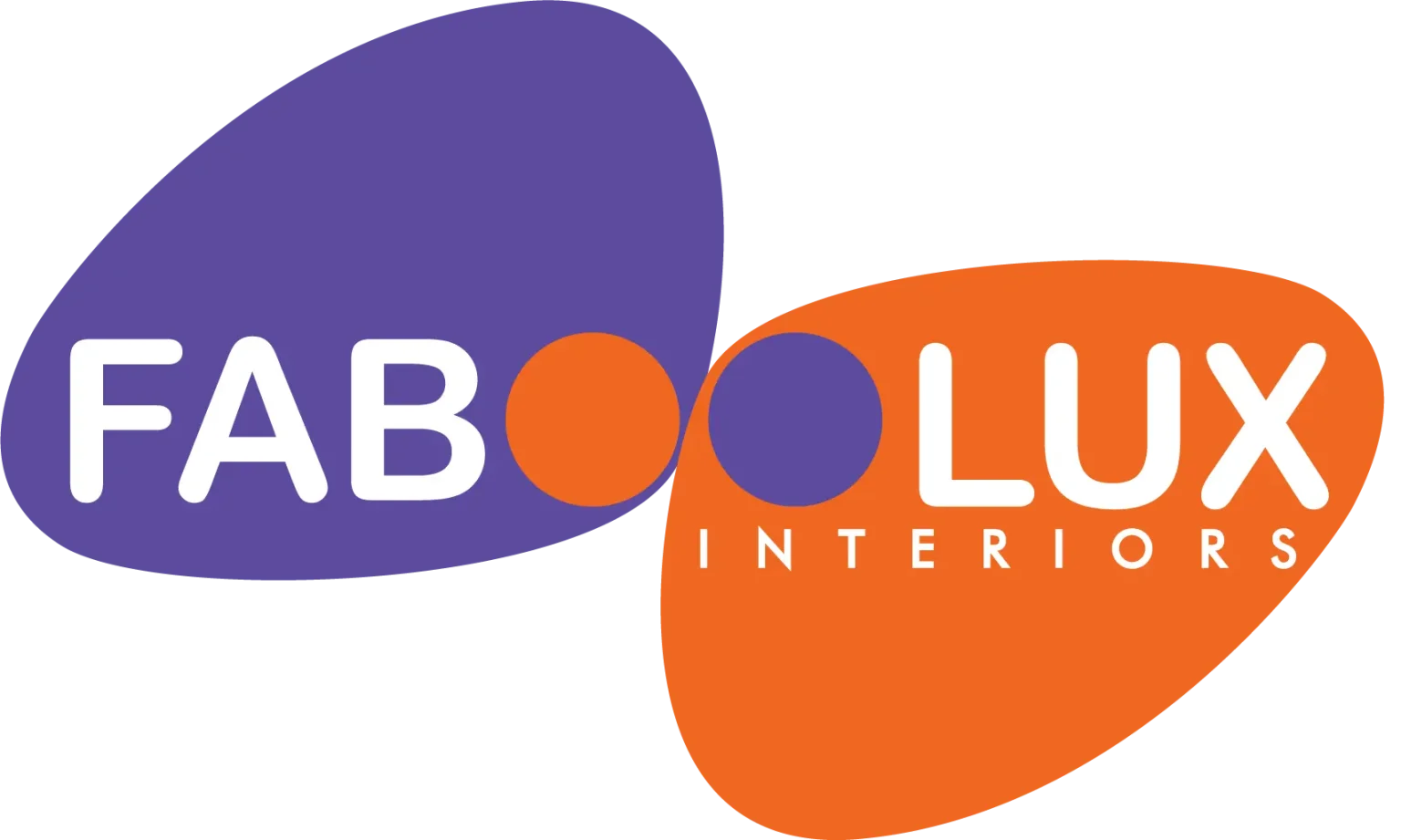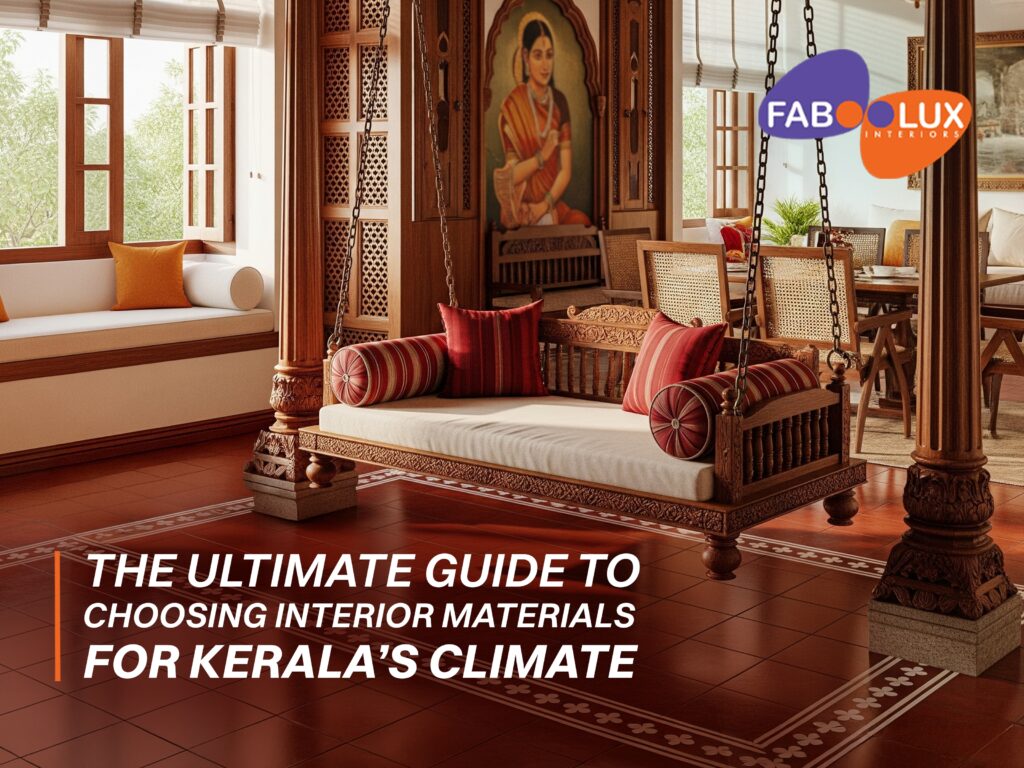Kerala’s lush landscapes and tropical monsoon climate create a unique set of challenges—and opportunities—when it comes to designing comfortable, durable, and beautiful interiors. From relentless humidity to heavy rainfall and coastal salt air, every material choice can impact how your home looks, feels, and lasts. Here’s an expert guide to making the best decisions for your interiors in Kerala.
Kerala’s climate is defined by year-round warmth (25–35 °C), high humidity (often above 70%), and intense monsoon seasons. These conditions can lead to common issues like mold, warping, corrosion, and fading. Selecting the right materials isn’t just about style—it’s about ensuring comfort, longevity, and easy maintenance. This blog will help homeowners, designers, and builders navigate these choices, offering practical advice tailored to Kerala’s environment.
Understanding Kerala’s Climate and Its Impact on Interiors
- Temperature: Warm throughout the year.
- Humidity: Consistently high, encouraging mold and mildew.
- Rainfall: Heavy monsoons can cause seepage, dampness, and water stains.
- Coastal Air: Salt-laden air accelerates metal corrosion.
Why Material Choice Matters:
- Reduces repair/replacement frequency
- Improves indoor air quality
- Enhances comfort and ease of maintenance
Flooring Material Options
Material
Key Advantages
Considerations
Ceramic/Porcelain Tiles
Water-resistant, easy to clean, cool underfoot
Grout may trap moisture; use water-resistant grout
Vitrified Tiles
Low porosity, highly durable
Slightly higher cost
Granite/Marble
Elegant, cool, moisture-resistant (when sealed)
Needs regular sealing; marble can be slippery
Engineered Wood/Laminates
More warp-resistant than solid wood
Still moisture-sensitive; use moisture barrier
Concrete/Cementitious
Durable, minimal maintenance, naturally cool
Needs sealing; may crack if not properly cured
|
Material |
Key Advantages |
Considerations |
|
Ceramic/Porcelain Tiles |
Water-resistant, easy to clean, cool underfoot |
Grout may trap moisture; use water-resistant grout |
|
Vitrified Tiles |
Low porosity, highly durable |
Slightly higher cost |
|
Granite/Marble |
Elegant, cool, moisture-resistant (when sealed) |
Needs regular sealing; marble can be slippery |
|
Engineered Wood/Laminates |
More warp-resistant than solid wood |
Still moisture-sensitive; use moisture barrier |
|
Concrete/Cementitious |
Durable, minimal maintenance, naturally cool |
Needs sealing; may crack if not properly cured |
Best Practices:
Prioritize non-porous or well-sealed materials.
Use anti-slip finishes in wet areas.
Opt for lighter shades to reflect heat.
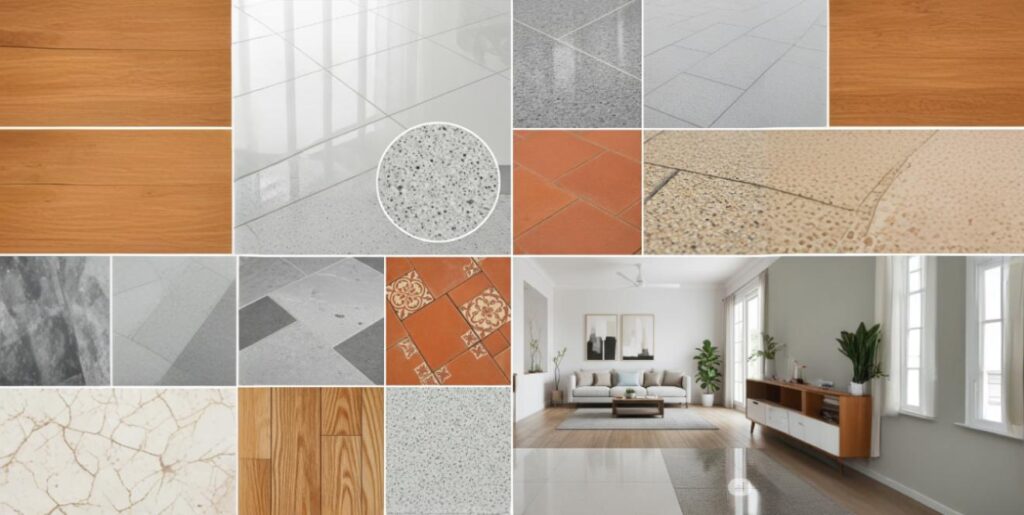
Wall & Ceiling Materials
Plaster & Paint: Use waterproofing additives in cement plaster; acrylic emulsion paints with antifungal properties; UV-resistant paints for exteriors.
Paneling & Cladding: Fiber cement boards (fire/termite/moisture-resistant), MR-grade veneered MDF, and PVC wall panels for wet areas.
Ceilings: Moisture-resistant gypsum boards, mineral fiber tiles (with good ventilation), and WPC (wood-plastic composite) for wood aesthetics without warping.
Tips:
Ensure proper damp-proofing and ventilation.
Use moisture-resistant backings in kitchens and bathrooms.
Choose light-colored paints to keep interiors cool.
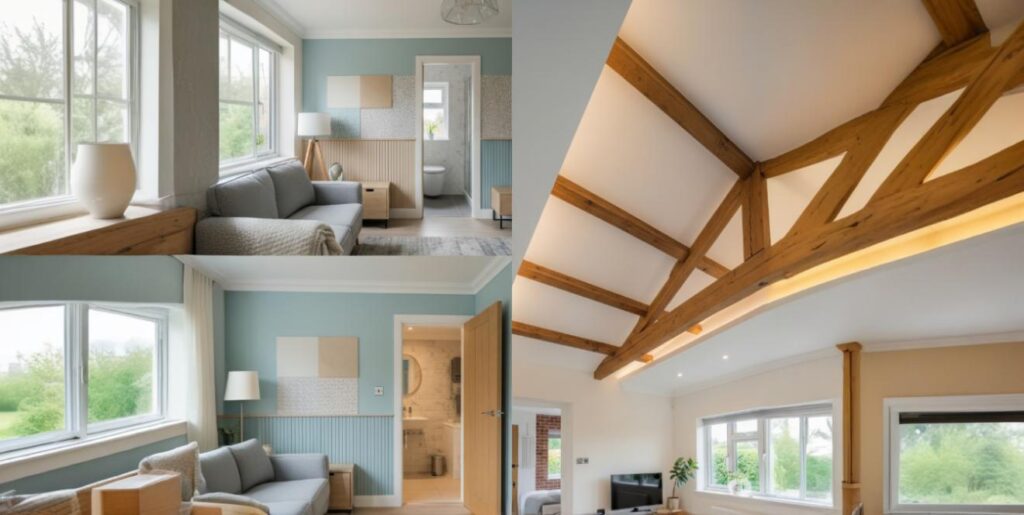
Furniture & Joinery Materials
Solid Teak/Rosewood: Naturally durable and termite-resistant, though costly.
Engineered Wood (MR-grade plywood, blockboard): Good for cabinets/wardrobes; seal all edges.
Veneers & Laminates: HPL sheets and PVC veneers offer durability and easy maintenance.
Metal: Powder-coated aluminum or stainless steel for frames; epoxy-coated wrought iron for decorative elements.
Rattan, Cane & Wicker: Lightweight, breathable, but requires regular inspection; synthetic versions last longer in humidity.
Upholstery: Synthetic blends (polyester, olefin) and outdoor-grade fabrics resist moisture and mildew.
Furniture Tips:
Prioritize moisture/termite-resistant materials.
Seal all edges; elevate legs off the floor during monsoons.
Use moisture-resistant adhesives and finishes.
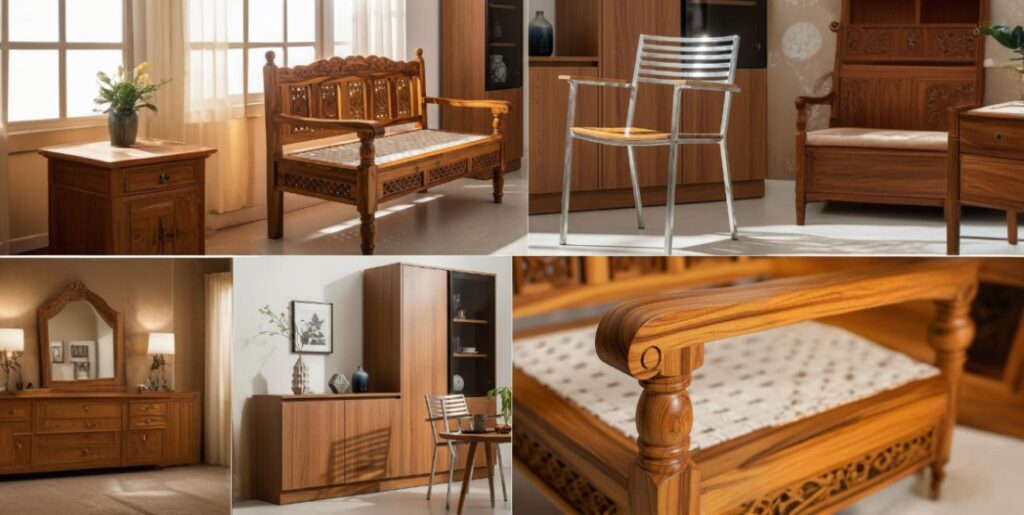
Fabrics, Soft Furnishings & Window Treatments
Curtains: Cotton-linen blends are breathable but need regular airing. Sheer voiles allow ventilation. UV-resistant and anti-mildew fabrics are ideal.
Cushions & Rugs: Outdoor-grade fabrics for verandas; synthetic rugs resist mold. Removable covers help with frequent washing.
Bedding: 100% cotton for breathability; moisture-wicking mattress protectors.
Soft Furnishing Tips:
Choose quick-drying, mold-resistant fabrics.
Store extras in ventilated spaces with desiccants during monsoon.
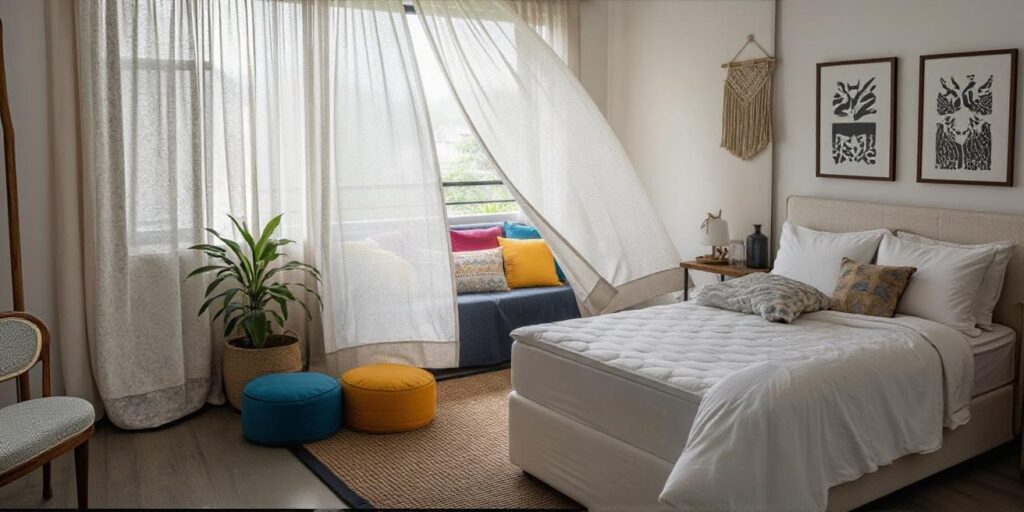
Paints, Finishes & Coatings
Interior Paints: Acrylic emulsions with mildew-resistant additives; low/zero-VOC for air quality.
Exterior Paints: Silicone-modified emulsions and elastomeric coatings for waterproofing; bitumen/polymer damp-proofing for foundations.
Wood Finishes: Marine-grade varnish and PU with UV stabilizers.
Metal Coatings: Powder coating, epoxy primers, and galvanization for corrosion resistance.
Maintenance:
Inspect surfaces for cracks or seepage before painting.
Use appropriate primers.
Repaint exteriors every 3–5 years in high-rainfall areas.
Local & Sustainable Material Choices
Traditional Materials: Laterite stone (good insulation), natural teak/jackfruit wood, rammed earth walls, bamboo, and palm products.
Recycled/Upcycled: Reclaimed wood, salvaged brick/stone accents.
Local Crafts: Coir-based mats, baskets, and lampshades.
Sustainability Tips:
Source materials locally to reduce transport impact.
Balance initial investment with long-term durability.
Maintenance Strategies
Mold/Mildew: Ensure ventilation, regular cleaning, use dehumidifiers and desiccants.
Wood Protection: Inspect for termites/rot, reseal before monsoon, avoid direct contact with damp walls/floors.
Metal Care: Inspect and touch up rust spots, lubricate moving parts.
Textile Care: Air and wash regularly, store in breathable bags, schedule professional pest control and maintenance checks annually.
Cost Considerations & Budget Planning
Upfront vs. Long-Term: Invest in quality, moisture-resistant materials for lower lifecycle costs.
Budget Tiers:
Economy: Cement tiles, MR-grade plywood, acrylic paints.
Mid-Range: Vitrified tiles, HPL plywood, synthetic fabrics.
Premium: Granite, solid teak, marine varnish, fiber cement/WPC panels.
Sourcing: Buy locally, negotiate bulk discounts, account for hidden costs (damp-proofing, skilled labor).
Maximize Value: Mix durable basics with statement accents; phase renovations to prioritize wet areas.
Trends & Emerging Materials
Innovations: Bamboo-composite boards, eco-friendly cement boards, green terracotta tiles, indoor vertical gardens, self-cleaning paints, phase-change materials.
Modular Systems: Prefabricated bamboo and fiber cement panels for faster, more consistent construction.
Advice: Pilot new materials in one room before full adoption; partner with local specialists.
Conclusion & Key Takeaways
Kerala’s climate demands interiors that resist moisture, mold, and heat. Prioritize sealed, non-porous materials, moisture-resistant substrates, and proper installation. Audit your home for existing issues, shortlist materials by room function, and budget for both upfront and long-term care. Blending modern solutions with traditional, local materials ensures comfort, durability, and a uniquely Kerala aesthetic.
Looking to design a home that stands strong against Kerala’s climate while reflecting your personal style? At Faboolux, we specialize in climate-smart interior solutions that blend durability with elegance. Talk to our expert designers today and bring your dream space to life—beautiful, functional, and built to last.
